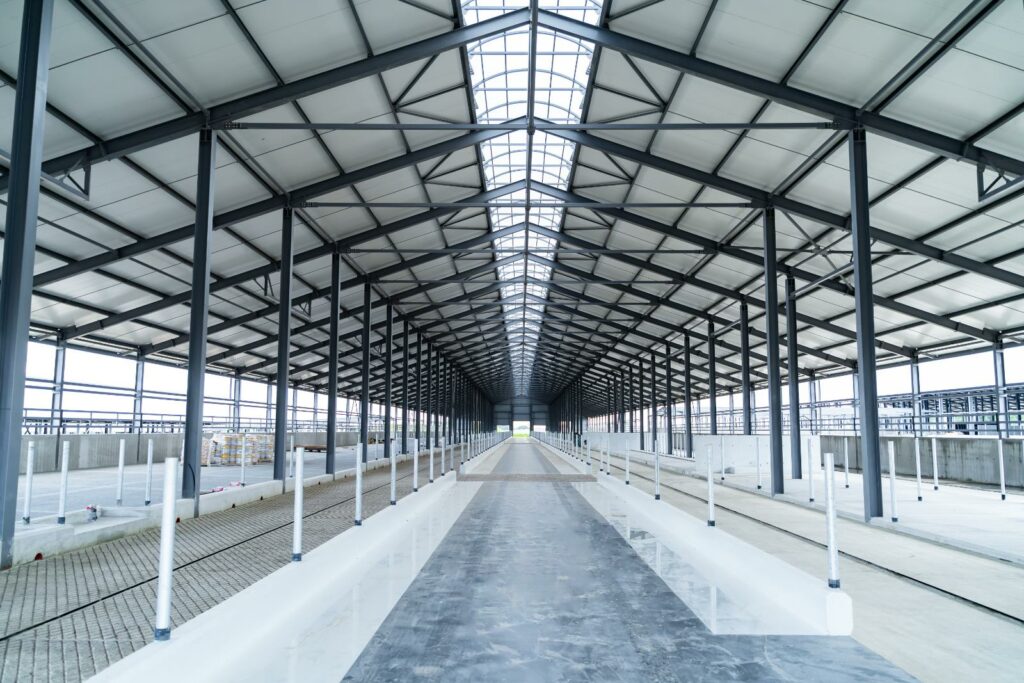
Contents
To enhance the energy efficiency of metal buildings, consider the myriad benefits of strategic design choices and material selections. By optimizing insulation, utilizing efficient lighting systems, and integrating advanced HVAC solutions, you can greatly reduce energy consumption and operational costs. But, there’s an important aspect often overlooked that could be the linchpin to achieving excellent efficiency. Curious to discover this essential element that can elevate your metal building’s energy performance to new heights?
Key Takeaways
- Use energy-saving materials like cool roofs and insulated panels.
- Implement efficient lighting solutions such as LED fixtures and daylight harvesting.
- Opt for advanced HVAC systems with smart thermostats and energy-efficient filters.
- Integrate renewable energy sources like solar panels and wind turbines.
- Regular maintenance tasks are crucial for maximizing energy efficiency.
Benefits of Energy-Efficient Metal Buildings
When considering the benefits of energy-efficient metal buildings, it becomes apparent that their design and construction play a crucial role in minimizing energy consumption and operational costs.
Energy saving materials and sustainable practices are key components that contribute to the efficiency of metal buildings. Energy saving materials such as cool roofs, insulated metal panels, and energy-efficient windows help in reducing heat gain, improving insulation, and optimizing natural light utilization.
Incorporating sustainable practices like using recycled materials, implementing rainwater harvesting systems, and utilizing renewable energy sources further enhance the energy efficiency of metal buildings. These practices not only reduce the environmental impact but also contribute to long-term cost savings by minimizing energy usage and increasing overall sustainability.
Insulation Options for Metal Structures
To enhance the energy efficiency of metal structures, selecting the appropriate insulation options is essential for optimizing thermal performance and reducing energy consumption. When considering insulation for metal buildings, reflective barriers and spray foam insulation are two effective options. Reflective barriers work by reflecting radiant heat away from the building, keeping the interior cooler in hot climates and reducing the need for excessive air conditioning. On the other hand, spray foam insulation provides a seamless layer of protection, filling gaps and preventing air leakage which commonly occurs in metal structures due to their construction. This helps maintain a consistent temperature inside the building and reduces the workload on heating or cooling systems.
| Insulation Type | Description | Benefits |
|---|---|---|
| Reflective Barriers | Reflects radiant heat away from the building, keeping the interior cooler in hot climates. | Reduces the need for excessive air conditioning, lowering energy consumption. |
| Spray Foam Insulation | Provides a seamless layer of protection, filling gaps and preventing air leakage. | Maintains a consistent temperature inside the building, reducing the workload on HVAC systems. |
Choosing the right insulation type depends on various factors, such as climate, building usage, and budget. Reflective barriers are cost-effective and ideal for warmer climates, while spray foam insulation offers superior insulation but comes at a higher price point. By understanding the benefits of each type and considering your specific needs, you can make an informed decision to maximize energy efficiency in your metal building.
Efficient Lighting Solutions for Savings
For optimizing energy efficiency in metal buildings, exploring efficient lighting solutions can greatly contribute to cost savings and overall sustainability. LED fixtures are a popular choice for metal buildings due to their energy efficiency and long lifespan. These fixtures consume markedly less energy compared to traditional fluorescent or incandescent bulbs, making them a cost-effective lighting solution in the long run. By upgrading to LED fixtures, you can reduce energy consumption and lower electricity bills.
Daylight harvesting is another effective strategy to enhance energy efficiency in metal buildings. This technique involves using natural light to illuminate indoor spaces, reducing the reliance on artificial lighting during daylight hours. By incorporating sensors and controls that adjust lighting levels based on the amount of natural light available, you can further optimize energy usage and create a more sustainable building environment.
When designing the lighting system for your metal building, consider the layout, usage patterns, and specific lighting needs of each area. By strategically placing LED fixtures and incorporating daylight harvesting techniques, you can create a well-lit and energy-efficient space that promotes productivity while minimizing energy costs. Investing in efficient lighting solutions not only benefits your bottom line but also aligns with sustainable practices for a greener future.
Advanced HVAC Systems for Climate Control
Enhancing energy efficiency and climate control in metal buildings can be achieved through the implementation of advanced HVAC systems. When considering the integration of such systems, there are several key factors to keep in mind:
Smart Thermostats: Utilizing smart thermostats allows for precise temperature control by learning your preferences and adjusting settings accordingly. These devices can also be remotely controlled, enabling you to manage climate settings even when you aren’t on-site.
Solar Panels: Incorporating solar panels into your HVAC system can greatly reduce energy costs by harnessing the power of the sun. This renewable energy source can help offset electricity consumption, making your building more sustainable and cost-effective in the long run.
Energy-Efficient Filters: Installing high-quality, energy-efficient filters in your HVAC system not only improves air quality but also reduces energy consumption. These filters help maintain efficient airflow, ensuring that your system operates effectively.
Zoning Systems: Implementing zoning systems allows you to control the temperature in different areas of your building independently. By dividing your space into zones, you can customize climate settings based on occupancy and usage patterns, further optimizing energy efficiency.
Renewable Energy Integration in Buildings
Maximizing energy efficiency in metal buildings through the integration of renewable energy sources is an essential step toward sustainable and cost-effective operations. By incorporating solar panels and wind turbines into your building design, you can greatly reduce your reliance on traditional energy sources while also lowering your utility bills.
Solar panels are a popular choice for renewable energy integration in metal buildings. They harness the power of the sun to generate electricity, providing a clean and sustainable energy source. By installing solar panels on the roof or walls of your building, you can take advantage of free and abundant solar energy to power your operations.
Wind turbines are another effective way to integrate renewable energy into metal buildings. By harnessing the power of the wind, these turbines can generate electricity to supplement your energy needs. Placing wind turbines in strategic locations around your building can help you tap into this renewable energy source and further reduce your environmental impact.
Incorporating solar panels and wind turbines into your metal building not only helps you reduce your carbon footprint but also positions your operations as environmentally conscious. By investing in renewable energy integration, you can achieve long-term energy savings and contribute to a more sustainable future for your business and the planet.
Maintenance Tips for Energy Efficiency
To maintain peak energy efficiency in metal buildings, regular upkeep and attention to key maintenance tasks are essential. Guaranteeing that your building is well-maintained not only prolongs its lifespan but also helps in conserving energy.
Here are some essential maintenance tips for maximizing energy efficiency:
Roof Maintenance: Inspect the roof regularly for any signs of damage, such as leaks, rust, or loose panels. Repairing these issues promptly can prevent energy loss through air leaks and water infiltration, which can lead to increased energy consumption.
Window Sealing: Check the seals around windows and doors to make sure they’re intact and do not allow drafts. Properly sealing windows can significantly reduce heating and cooling costs by preventing air leakage.
HVAC System Maintenance: Regularly clean or replace HVAC filters to ensure the system operates efficiently. Dirty filters can restrict airflow, making the system work harder and consume more energy.
Insulation Inspection: Inspect the insulation in walls, ceilings, and floors to ensure it’s in good condition. Proper insulation helps maintain a consistent indoor temperature, reducing the workload on heating and cooling systems.
Summary
Optimizing energy efficiency in metal buildings is essential for reducing costs and environmental impact.
You can create a sustainable and eco-friendly structure by incorporating energy-saving materials, efficient lighting solutions, advanced HVAC systems, and renewable energy sources.
Remember, maintaining these practices is like watering a plant – regular care and attention will ensure continued growth and success in saving energy.
Keep up the good work, and watch your savings blossom!
Recent Posts
3 Tips for Personalized Metal Garage Solutions
Finding personalized metal garage solutions can transform your cluttered space into a functional haven. By
Guide to Lasting Metal Structures for Homes
Imagine a sturdy metal garage standing proud against the fiercest storms, much like a lighthouse
What Are Affordable Metal Garage Options for Farms?
Imagine you’re managing a bustling farm like Smith’s Acres, where every inch of space counts.




